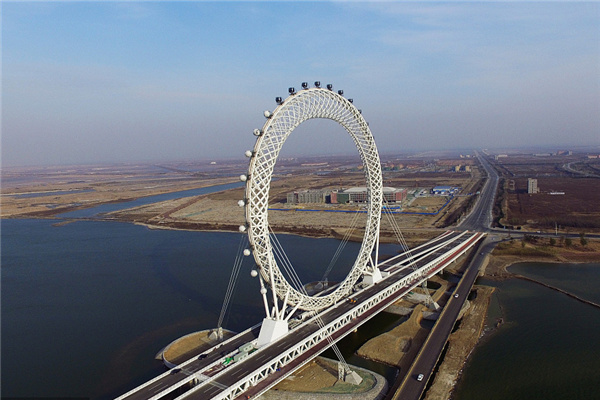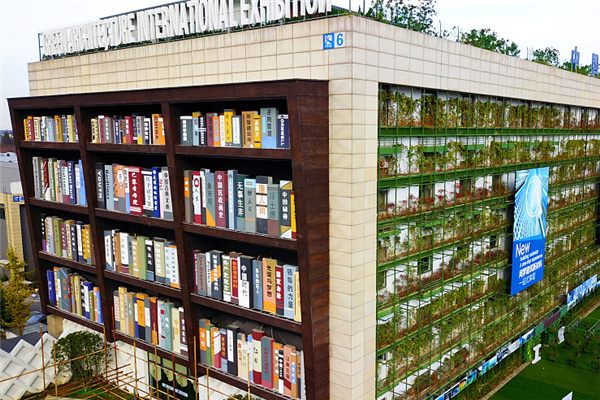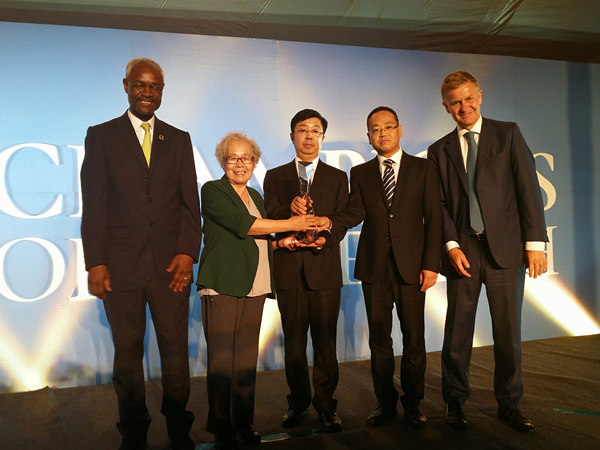

All over the world, buildings are normally constructed by using one of three mentalities and/or methods. With conventional materials and tools; with modularized production methods using repetitive pieces; with the latest eco and green technologies in order to save resources without sacrificing the environment by harming and destroying nature.

Although China has abundant cheap labor, it lacks sufficient resources and energy reserves. With the rapid growth of China's overall strength and economic power, and being the third largest economy in the world, as well as a nation with the most foreign reserves, China must develop its hi-tech and eco housing both in its cities and rural regions in the construction industry.
When one does urban planning, usually two mindsets will quickly appear in his/her head. Some hold that we should plant trees now so our future generations could enjoy the shades. And some believe that one should resolve one's own immediate problems now and leave the consequences for the future generations to solve.
When you are poor, you will opt to take the second option as staying alive is important. But once you are an able individual, the first option shall be the only way to go. One must realize that it takes years for a planted tree to mature and years to clean out a polluted river. Our future generations will pay a dear price for our mistakes and unwise decisions made today. The wealthier and more civilized a society is, the more attention its citizens will pay for its future generation's welfare.
Chinese people know that resources are becoming scarcer, food prices are rising, the environment is worsening and global warming seems here to stay. China can no longer afford not executing energy and resource conservation. China must build more green buildings for the sake of its future generations.
For a long time, I have been recommending that the Chinese government require the mandatory adoption of the green building technologies for its buildings. I am glad to hear that many government buildings, especially at the central level, are now being built with such energy-saving techniques.
In my lectures to the Chinese government officials, I have said that green building is the trend of future. It is an important direction in sustainable development. Green building does not mean planting more trees and grass areas, but it refers to the careful design, construction, operation and reuse or removal of the existing environment in an ecological, energy-efficient and sustainable manner. Green and eco-architecture are not asking man to live in a primitive life style. It is a revolution to challenge a new way of designing architecture. It is what we are seeking in our era. It is for the long term benefits of mankind. In addition, the essence of eco-architecture is based upon its respect of nature, protecting our environment to sustain the human race.
We need to know that energy consumption represents the single largest controllable operating expense for a building, typically a third of variable expenses. A 30 percent reduction in energy consumption could be readily achieved by improving the building operating standards.
In 2004, green building comprised approximately 2 percent of the new US "nonresidential" construction market, which translates to approximately a $3.3 billion industry.
Based upon the research findings, McGraw Hill Construction (MHC) projects that by 2010, between 5 percent and 10 percent of new non-residential construction starts will be designed using the principles of green building.
MHC forecasts US nonresidential construction starts will be worth approximately $204.5 billion in 2010. A projected growth of 5-10 percent translates to a green building market valued between $10.2 and $20.5 billion.
For all industry professionals, the largest obstacle to green building is a perceived higher initial investment, which is about 8 percent of the total construction cost. And more importantly for the Chinese government to know is that currently there is not a dominant "green" building product manufacturer in any building product category. This is the biggest motivation for the market, and this could be a great business opportunity for China to seize.
I hope within the 4 trillion yuan stimulus plans China is undertaking, the government would take this unprecedented opportunity to promote more green building technology, not only in urban centers but also in its vast rural reconstructions.
I would also suggest that China learn from the US whereby the architects are called in to provide ideas for rural housing prototype design so the design can be both interesting and efficiency. Many architects would welcome a design competition on this subject. Architects are here not only to serve the rich but more importantly to help the poor. This could be a win-win situation for every one involved, and it could also provide a leading example for the rest of the world to learn. By doing so, China will not only help fostering and developing a brand new industry based upon the green building technology thus generating new jobs; it will also gain the respect from the international community.
The author is a certified foreign expert by the State Council on planning and economic development. All views expressed herein are his own. He can be reached via email at jamesjao@jaodesign.com
(China Daily 02/09/2009 page5)













